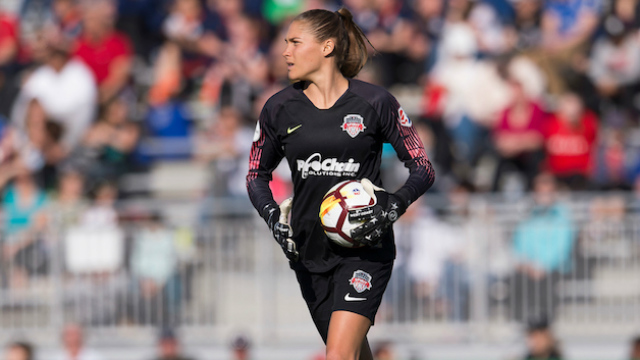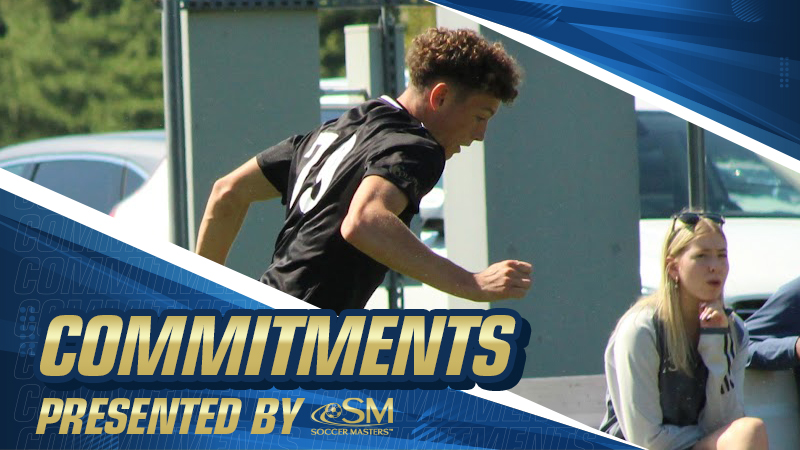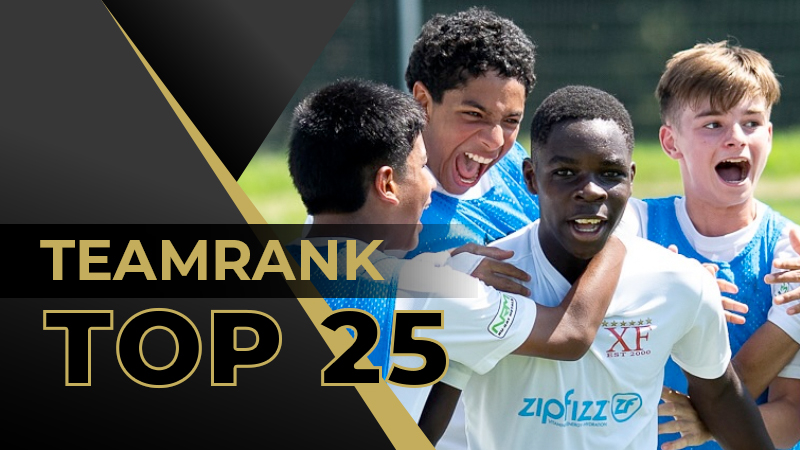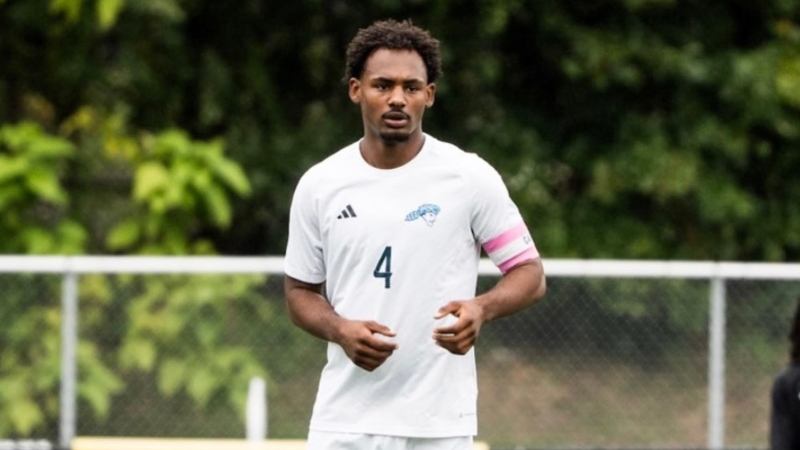Dispelling three goalkeeping myths

There are a number of catchphrases and quips surrounding goalkeeping advice. Of course, a number of them are helpful when first learning the position as they provide help with priorities when preparing for a dangerous chance on goal. But like most guidelines, they are just that. Most of the time they’re sound wisdom, but there are some exceptions. Here are three goalkeeping myths that have their place and time in certain settings, but aren’t one size fits all by any means.
Cut down the angle - Cutting down the angle is a great visual for young goalkeepers to understand covering more of the goal mouth. It has added elements of producing safer parries (ideally around the post and not inside it) as well as encouraging a goalkeeper to not hug their line in case there is a long ball or loose touch. However the main priority when facing a close encounter is keeping the ball out of the net, which cutting down the angle can actually inhibit occasionally.
After a long and discouraging day at the office, Canadian goalkeeper Kailen Sheridan has conceded four goals by the 80th minute and she’s facing yet another final chance in stoppage time, this time a 1v1 with a trailing defender. It’s a situation many goalkeepers have seen and with the scoreline at 4-0, they understandably opt for aggression than patience. As Sheridan barrels down, the striker slots the ball between Sheridan’s legs for the fifth goal of the game. Sheridan is seven or eight yards away from the shooter - and with the defender closing the gap - she would actually help herself to not continue to cut down the angle, cut her run up a step short, and prepare herself for the shot. Because her momentum is so far forward, she can’t sort out her feet until the ball has passed her.
In a very similar play against the Utah Royals in the 70th minute, Houston Dash’s Jane Campbell readies herself early, even though she could theoretically closed down the angle a bit more. Rather than risking poor footwork by gaining a couple of inches, she ends up making a wonderful skate save because she has not cut down the angle all the way. These 6-to-8 yard situations are tricky for goalkeepers as the allurement of sliding into the striker is on the table but hopefully they can recognize it’s too much ground to cover in not enough time.
Cutting down the angle is a good tool to get a goalkeeper off their line and can help a reluctant player understand the advantages of being aggressive, but it shouldn’t come at the cost of having out of control feet. For Sheridan and Campbell, if the shooter is within a few yards, it usually makes sense to put more pressure on them, but with farther distances standing strong is the right call.
Don’t get scored on near post - Ask any goalkeeper and they can probably recall a coach or teammate yell at them “don’t get scored on near post!” The general thought behind the shout is that it’s easier to score on the near post and thus a goalkeeper should force the opposition towards the more difficult shot (the far post). Unfortunately this well-intended quip can easily lead goalkeepers to overprotect their near post to the point where they concede the far post entirely, if not the middle of the goal as well.
In mid-March, Joe Willis and the Houston Dynamo took on the Vancouver Whitecaps. At the 54th minute and protecting a 2-1 lead, the Whitecaps get a counter from Willis’ right side. The forward cuts back to his right foot towards the middle of the field. Willis has not made the necessary adjustment and has ended up hugging his near post.
On one hand, Willis is being patient like Campbell was on the previous save. He doesn’t want to get caught moving as the shot is hit, losing time for himself to react and not being able to get back to the near post. However, the touch back inside is the perfect opportunity for Willis to shuffle or hop to his left while maintaining balance to dive to either side. It’s an easy shot for Vancouver’s Lass Bangoura who sees the far side of the goal as a giant “OPEN” sign.
It’s a decent shot at the end of the play, something that Willis may still not get even if he is in position. (Willis looks 6 to 8 inches off from making the save.) Additionally, if Willis slides to the middle of the goal, Bangoura may decide to go near post because the goal has changed. However the difference here is that Willis can’t make a play at all. Even a shot closer to the middle will elude Willis. If he adjusts his positioning, it at least gives him a chance to make the save.
A good example of a slight adjustment in footwork can be seen from Washington Spirit’s Aubrey Bledsoe back in September. In the opening minutes against Sky Blue, a player cuts back towards the middle of the field to put a shot on goal, right under the crossbar. Watch Bledsoe’s feet (0:17 in the video), mimicking Madison Tiernan’s touch.
It’s a great tweak in her positioning that helps her get a strong palm to push the ball over the bar. Without it, she’s likely watching the ball hit the net instead.
There’s nothing the goalkeeper could do - Despite trying to give a goalkeeper the benefit of the doubt, this quip is typically easy rhetoric for commentators to over exaggerate a goal’s difficulty. It’s so prevalent, there’s a good chance you’ll hear this phrase within the next couple games you watch. Ask any goalkeeper and there are only a handful of goals they’ll admit they couldn’t stop. The rest, they’d love to have a second chance at.
Bledsoe’s adjustment in the aforementioned save is a great example of a small improvement that makes or breaks a save. These sleight of feet maneuvers are often missed by commentators, if not the cameramen themselves. Other intricacies that are overlooked can be communication with defenders, body weight, hand positioning, line of attack, reacting despite blocked eyesight, and a number of other nuanced decisions a goalkeeper may not have to repeat for another year.
Aside from the rare wonder goal, Ibrahimovic’s first MLS goal being an obvious one, a goalkeeper can almost always do something better. For coaches and young goalkeepers, the process of becoming a better goalkeeper depends on the player to recognize their shortcomings and not give passes on mistakes because the shot looked great at first glance. Studying a conceded goal is a perfect time for a goalkeeper to learn how to make tangible improvements to their game.
Headlines
- Recruiting Roundup: December 22-January 4
- Vote for Men's College Soccer Best Goal
- 2026 Women's Division I Transfer Tracker
- Vote for Women's College Soccer Best Goal
- TDS Fall High School Boys Best XI
- TopDrawerSoccer TeamRank Update - Boys
- TDS Fall High School Girls Best XI
-
Commitments: Decided on Delaware

- TDS Girls Regional Rankings: Class of 2027
-
Draft Picks Who Can Make MLS Impact




